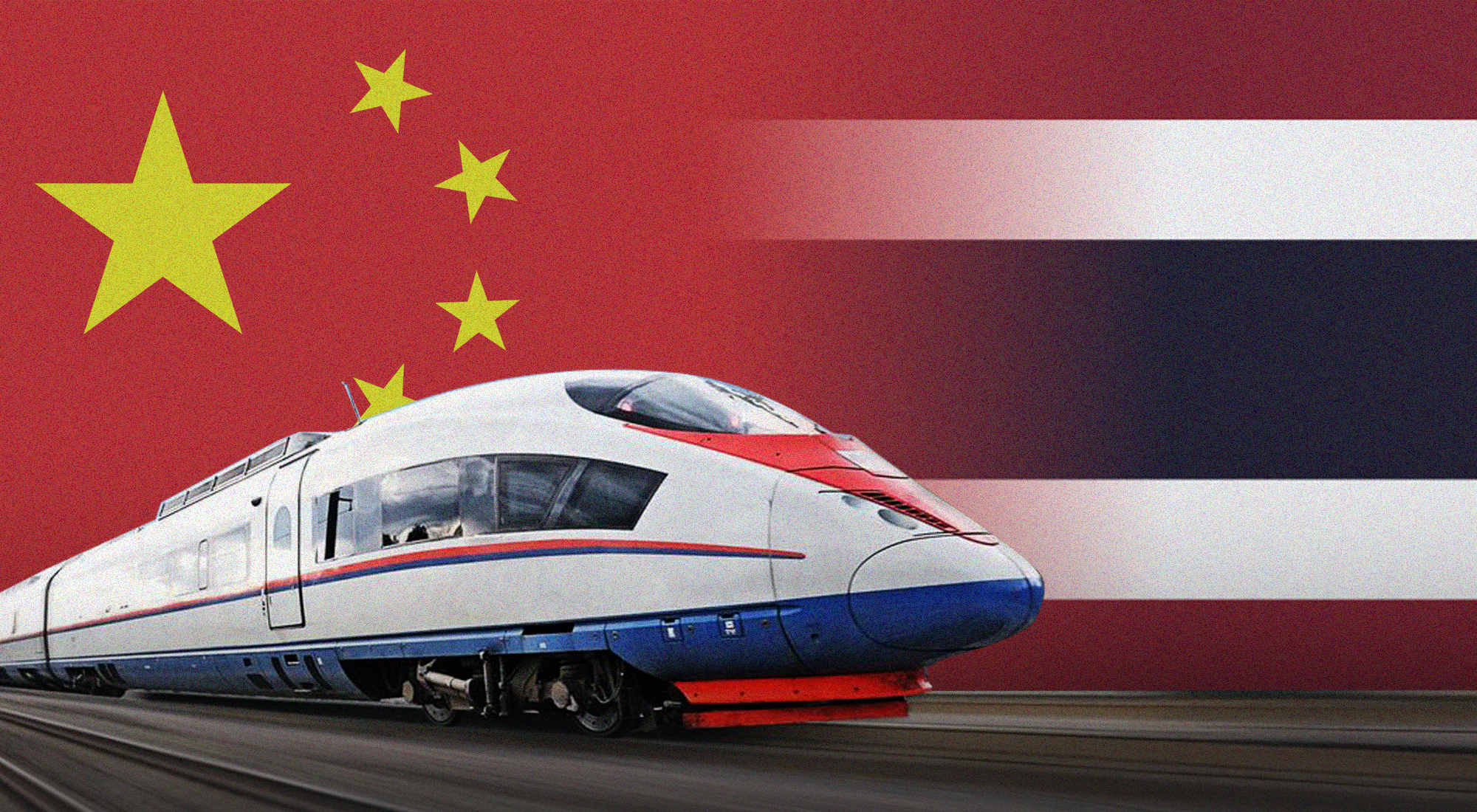The China-Thailand Railway Project is an important infrastructure initiative that combines economic aspirations with broader geopolitical ambitions, marking a significant chapter in Southeast Asia’s regional development narrative. With China’s substantial investment in Thailand’s transportation sector, this railway project is built to reshape the dynamics of trade and commerce, offering a corridor that not only facilitates the movement of goods but also aims to strengthen local industries by enhancing their accessibility to larger markets. As the railway network unfolds, it is crucial to evaluate its potential impact on employment rates within Thailand, which could provide a boost to the labor market in various sectors. However, this infrastructural advancement is accompanied by a range of social challenges for communities located along the railway route, including displacement, cultural disruption, and changes in local economies that could exacerbate existing inequalities. Furthermore, the project carries significant political weight, aligning closely with China’s strategic interests in asserting its influence across Southeast Asia, which has sparked a variety of reactions within Thailand—ranging from enthusiasm over economic opportunities to apprehension regarding national sovereignty and possible reliance on Chinese investments.
Economic Impacts of the China-Thailand Railway Project
The impact of railway projects on regional trade and commerce is multifaceted and deeply interconnected with various socio-economic and political dimensions. Railway developments, particularly those driven by China’s Belt and Road Initiative (BRI), have been perceived as vital in supporting contemporary African regionalism, with potential advantages for intra-African trade and the strengthening of regional value chains.[1] These projects can significantly enhance public transportation efficiency and convenience, which in turn facilitates the movement of people and goods, thereby positively impacting regional trade and commerce.[2] However, these benefits are not uniformly experienced across all regions, as evidenced by the challenges small businesses face during the construction phase of light rail projects, potentially leading to commercial displacement and altered business landscapes. It is imperative to consider these various impacts and implement effective strategies for business retention and mitigation to support small businesses affected by railway constructions, ensuring that the broader implications for regional commerce are addressed in a manner that promotes sustainable economic development.[3]
What are the potential benefits for Thailand’s local industries?
In Thailand, the development of local industries hinges significantly on fostering strong linkages between small and medium-sized enterprises (SMEs) and multinational enterprises (MNEs), a strategy that promises to increase the competitiveness and market access of Thai suppliers.[4] These linkages are further supported by coordinated efforts from government bodies such as the Office of SME Promotion (OSMEP), which plays a crucial role in aligning promotion activities and ensuring that SMEs receive the necessary support to thrive.[5] Moreover, the implementation of supplier development programs by industry associations, including the Thailand Automotive Institute and the Electrical and Electronics Institute, provides SMEs with critical resources like testing, consulting, and training services meant to enhance their production capabilities.[6] Such initiatives not only bolster the operational efficiency of SMEs but also position them strategically within global value chains, thereby facilitating their expansion into international markets. To fully reap these benefits, it is imperative that Thailand continue to invest in these connections and development programs, as they are vital to maintaining economic growth and boosting the global competitiveness of its local industries.
How might the project affect employment rates in Thailand?
The project is set to impact Thailand’s employment rates by having varying effects on different sectors, particularly agriculture and services, which are expected to experience relative employment gains over more conventional sectors like manufacturing and banking. This shift suggests a progressive trend in employment outcomes, as these sectors have shown resilience and growth potential in the face of broader economic challenges.[7] Migrant workers are another group that stands to benefit from these changes, as they have historically seen improvements in job opportunities compared to non-migrants, indicating a positive shift in employment conditions for this group.[8] However, to ensure these potential benefits translate into meaningful improvements in employment rates, it is crucial to address systemic issues such as low compliance with labor laws and the limited impact of social security expansion without effective enforcement.[9] This highlights the need for robust policy interventions and enforcement mechanisms to truly capitalize on the project’s potential to enhance employment conditions across these growing sectors. Such interventions could include strengthening labor rights, expanding social security coverage with effective compliance measures, and supporting skills development initiatives to guarantee that employment gains are both equitable and sustainable.
Social and Political Implications of the China-Thailand Railway Project
Communities along the railway route find themselves struggling with numerous social challenges, especially those stemming from deindustrialization and the impact on the poorest social classes. The decline in industrial activities has not only led to economic hardship but also exacerbated problems like a decline in populated areas and social exclusion, resulting in a complex socio-economic environment.[10] Efforts to revitalize these areas through territorial railway regeneration projects offer a potential pathway to social redemption, providing a means to rebuild unity and local pride. However, to achieve this, the underlying economic challenges that hinder community engagement in activities promoting social cohesion must be addressed.[11] The involvement of volunteers and community stakeholders is important in maintaining a sense of identity and belonging, as they help preserve the signs and symbols that connect residents to their heritage.[12] Furthermore, the revitalization of these communities through projects like tourist railways highlights the necessity for a unified design that fosters social inclusion, ensuring that these transport infrastructures serve as unifying factors rather than divisive ones.[13] Consequently, addressing these interconnected social challenges demands a multifaceted approach that combines heritage conservation, economic revitalization, and active community participation, ultimately promoting a more cohesive and resilient social fabric.
How does the project align with China’s strategic interests in Southeast Asia?
China’s strategic interests in Southeast Asia are profoundly intertwined with the BRI, which serves as a cornerstone of its economic statecraft in the region. Through the BRI, China endeavors to bridge crucial infrastructural and developmental gaps, thereby enhancing its influence and connectivity within Southeast Asia. However, these efforts are not without challenges, as the BRI has produced mixed effects; while it reduces physical distances, it simultaneously reveals and sometimes deepens perceptional and political divides between China and the host countries.[14] This duality reflects the complexity of China’s ambitions in the region, where economic strategies are intricately linked with geopolitical objectives. The interplay of power asymmetries, bilateral complexities, and domestic political imperatives among Southeast Asian nations further complicates this landscape, challenging China’s strategic agenda.[15] To navigate these complexities, China must engage in careful diplomacy and negotiation, ensuring that the nation’s initiatives align with both its strategic interests and the developmental aspirations of its Southeast Asian counterparts.
What are the political reactions within Thailand regarding the project?
The political responses in Thailand regarding the Village Fund Project (VFP) are closely linked to the broader socio-political dynamics and power structures in the country. The VFP has inadvertently influenced local political engagement by creating committees at the village level that often lacked transparency, which has undermined trust in local governance.[16] This lack of transparency has allowed a small group of elite villagers to monopolize the benefits of the project, shifting local political dynamics by concentrating power and resources in the hands of a few. These elites have frequently acted as vote bases or canvassers for politicians at various levels, further entrenching political patronage systems. As a result, there has been an increase in local scrutiny of these village elites, forcing them to widen their alliances and engage in practices of cooptation and consultation, which could potentially foster more inclusive political engagement.[17] This evolving political landscape necessitates actions that promote transparency and accountability to ensure that the benefits of projects like the VFP are equitably distributed, thereby strengthening democratic processes and reducing elite capture.
Conclusion
The China-Thailand Railway Project stands at a critical juncture where its anticipated economic advantages must be carefully weighed against the social challenges it presents. As illustrated in the summary, the project is expected to significantly enhance transportation efficiency, thereby boosting regional trade and commerce. This potential for economic uplift, however, is not without its complexities. Small businesses, which often serve as the backbone of local economies, may encounter difficulties during the construction phase, highlighting the need for targeted support strategies to ensure their survival and integration into the evolving economic landscape. Moreover, while the project promises job creation, particularly in agriculture and services, it simultaneously raises concerns about labor law compliance and social security for workers, particularly for the often-vulnerable migrant labor force. Addressing these systemic issues is essential to fostering sustainable employment opportunities that do not merely replicate existing inequalities.
[1] Tim Zajontz, “Chinese globalism, African regionalisms and state spatial strategies,” in Africa’s Railway Renaissance (Routledge, 2023), www.taylorfrancis.com.
[2] Sara Tornabene and Isabelle Nilsson, “Rail transit investments and economic development: Challenges for small businesses,” Journal of Transport Geography 94 (June 2021), www.sciencedirect.com/science/article/pii/S096669232100140X
[3] Ibid.
[4] Chaiyuth Punyasavatsut, “SMEs in the Thai Manufacturing Industry: Linking with MNES,” in Lim, H (ed.), SME in Asia Globalization, ERIA Research Project Report, 2007-5, pp. 287-321, www.eria.org.
[5] Ibid.
[6] Ibid.
[7] Jere R. Behrman, Anil B. Deolalikar, and Pranee Tinakorn, TDRI Quarterly Review 16, no. 3 (September 2001), www.thaiscience.info/Journals/Article/TQR/10475188.pdf.
[8] Ibid.
[9] Ibid.
[10] Giovanni Peira, Agata Lo Giudice, and Stefania Miraglia, “Railway and Tourism: A Systematic Literature Review,” Tourism and Hospitality 31, no. 1 (2022): pp. 69-79, www.mdpi.com/2673-5768/3/1/5., retrieved February 6, 2025.
[11] Samuel Jones and Melissa Mean, Resilient places, (London: Demos, 2010), demos.co.uk., retrieved February 6, 2025.
[12] Ibid.
[13] Giovanni Peira, Agata Lo Giudice, and Stefania Miraglia, “Railway and Tourism: A Systematic Literature Review.”
[14] Cheng-Chwee Kuik, “Chapter 4: Connectivity and gaps: the bridging links and missed links of China’s BRI in Southeast Asia,” in Maria A. Carrai, Jean-Christophe Defraigne, and Jan Wouters (eds), The Belt and Road Initiative and Global Governance, 2020, www.elgaronline.com.
[15] Ibid.
[16] Antika Preeyanon, The Village Fund Project and Changes in the Dynamics of Local Power in Rural Thailand, PhD thesis, University of Leeds, 2007, etheses.whiterose.ac.uk/21100/.
[17] Ibid.








